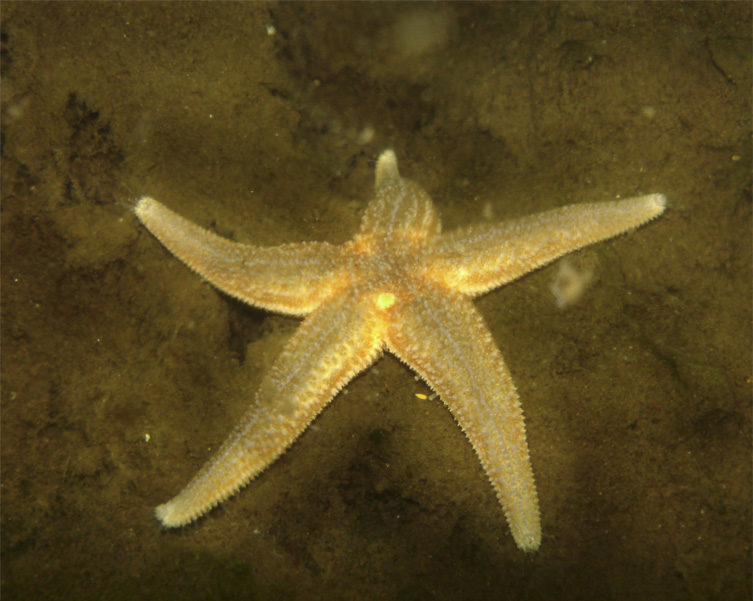
Sea stars.
There are 9 or 10 species of sea stars in the White sea.

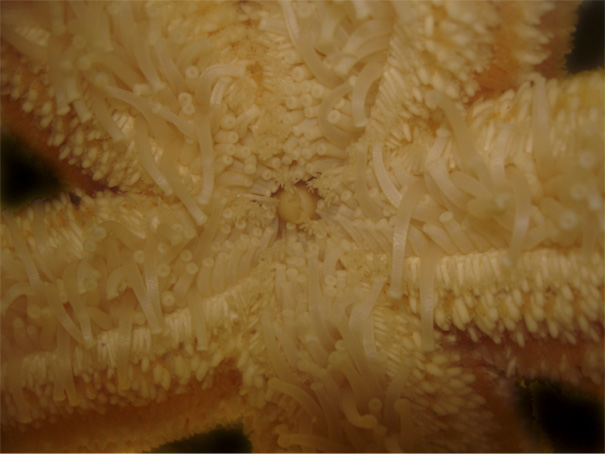
They are fantastic creatures! My favourite =)
Asterias rubens - the common sea star, it inhabits the entire Atlantic east coast. It is a typical five-armed sea star. On the second photo you can see the mouth and the tube feet.
It is interesting that Asterias rubens is the only White sea star that has a plankton larva.
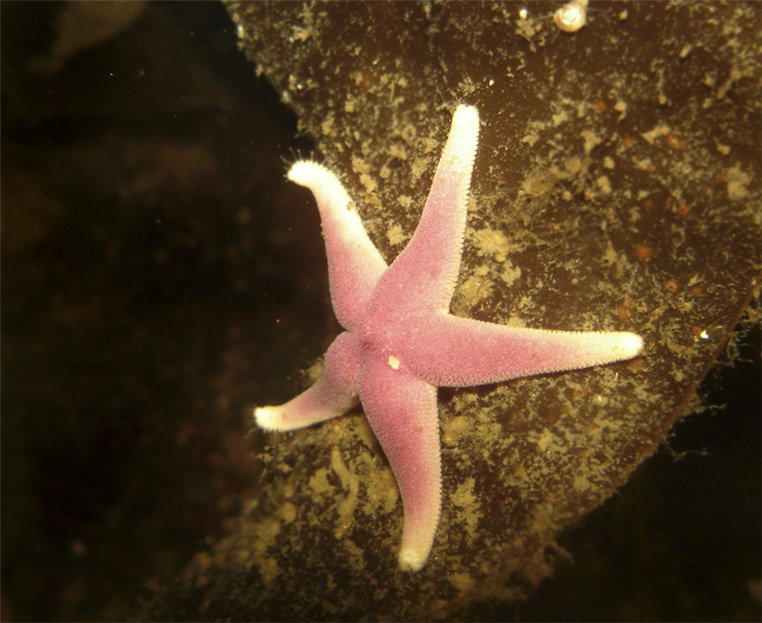
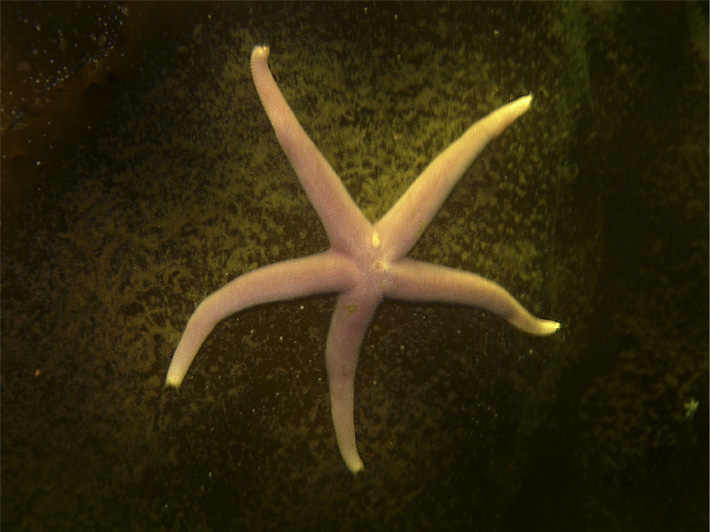
This is another sea star species, a bit similar to asterias. Henricia sp.
Nobody knows how many species of henricia are there in the White sea. These stars are variable, they can be dark-violet, yellow, even variegated! Their aboral skeleton also varies. Apparently there are 2 or 3 henricia species.
All henricias feed on sponges.
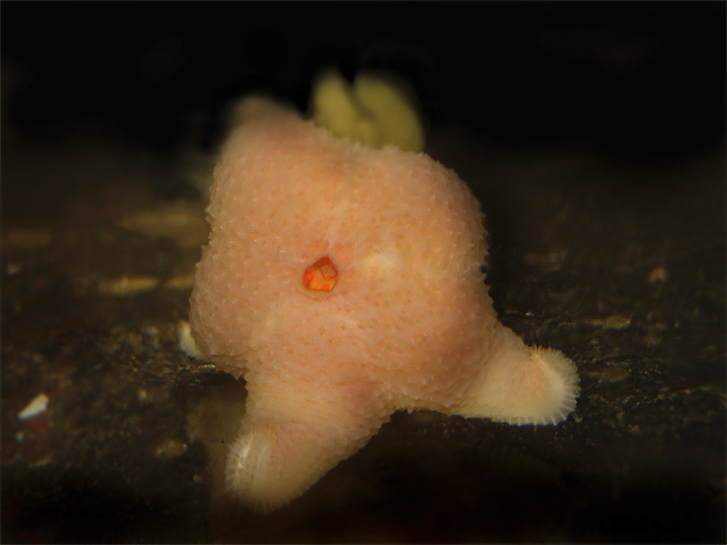
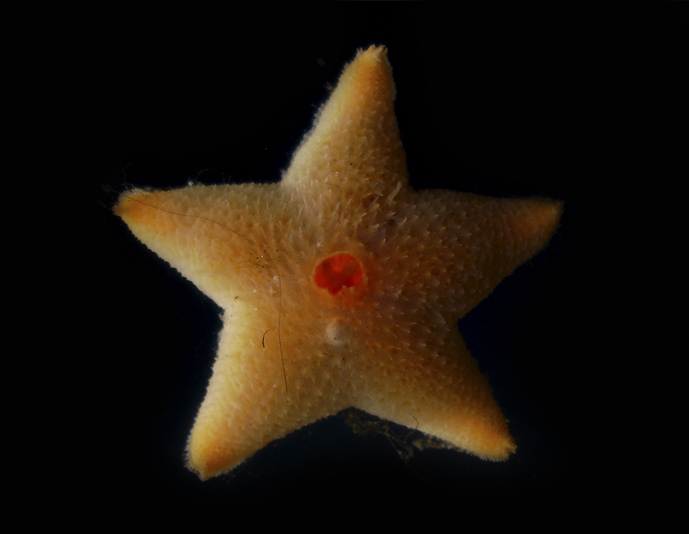
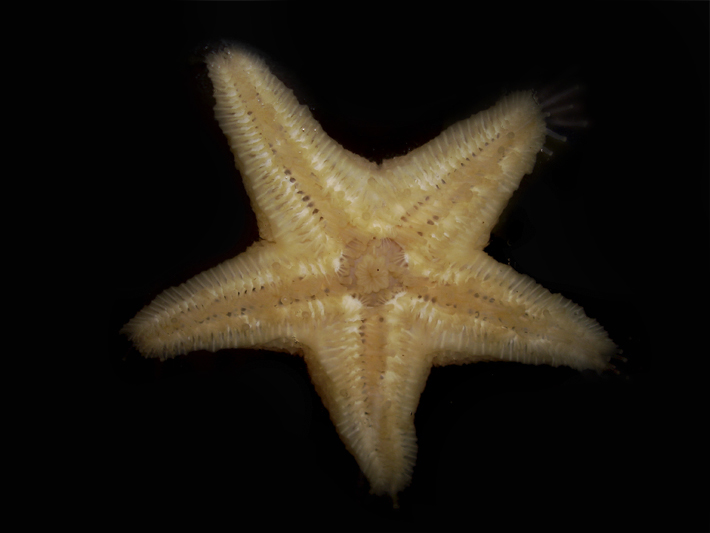
Pteraster militaris - an astonishing sea star! It is rather rare in the White sea, it lives deeper than 20 m on silts and stones.
The hole in the middle of the aboral side isn't an anus! The anus of pterasterids (like the most of sea stars) is very small and doesn't functionate. That big hole is an osculum, an enter to the brood chamber. Actually you can't see the aboral side on the photo. You see the supradorsal membrane, a cutaneous fold that is strained over the long and thin paxillas (the bunches of needles) of the aboral skeleton. There is a space under that membrane - a brood chamber where the young pterasters develop. The size of the chamber differs rythmically by the paxillas lifting and sinking. the chamber ventilates itself.
When the time comes the young pterasters scramble out through the osculum or just membrane gaps.
These stars produce huge quantities of slime. It is very difficult to dry them out!
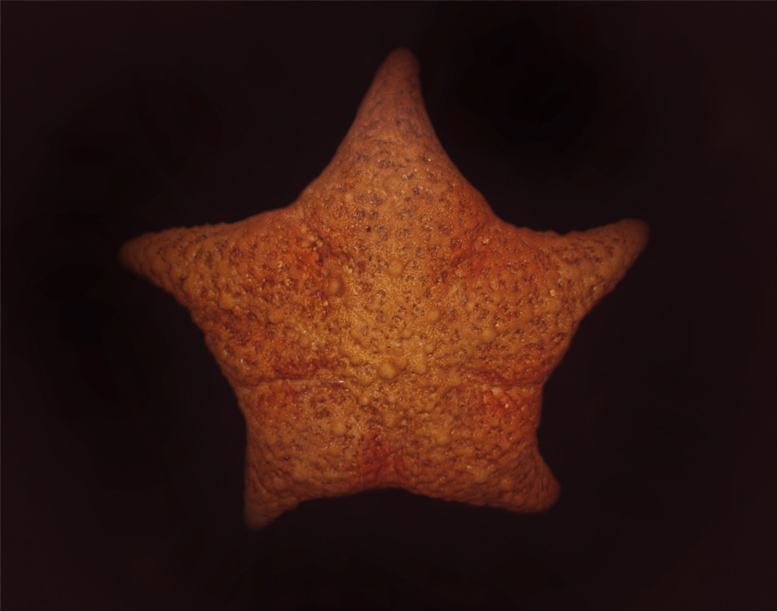
Poraniomorpha tumida - a deep-sea star, it never rises upper than 30 m deep. We know very little about its life.


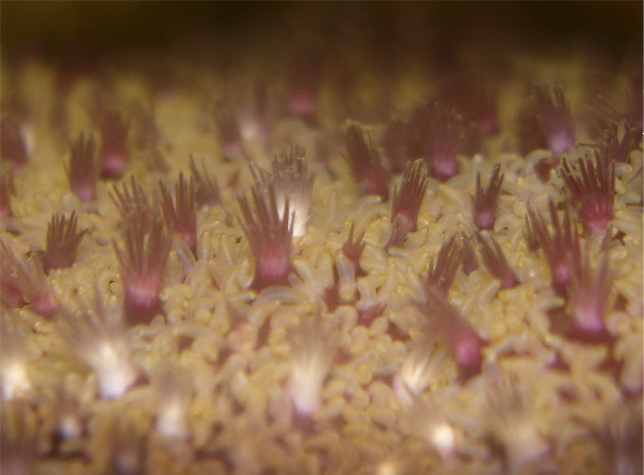
Crossaster papposus - a well-known sea star. Crossaster is wide-spread, you can find it in Pacific and Atlantic oceans.
It is one of the fastest sea stars, its speed may reach 3 cm/sec (that is faster than any other sea star!)
On the third photo you can see its skin. Notice tha pink-violet paxillas and half-transparent skin gills.
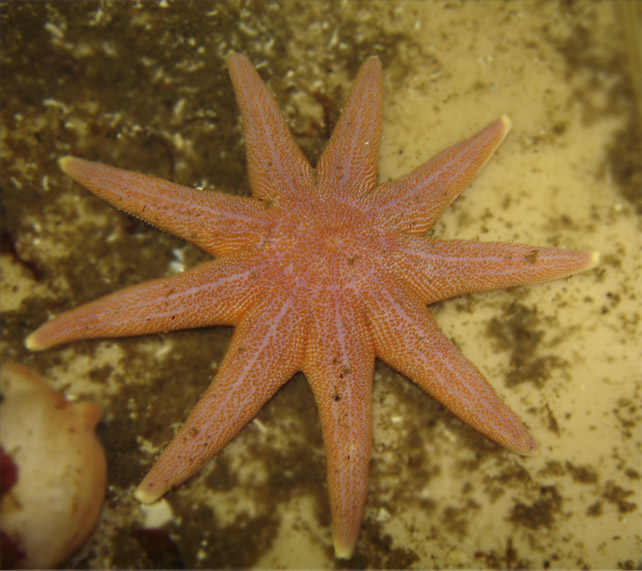
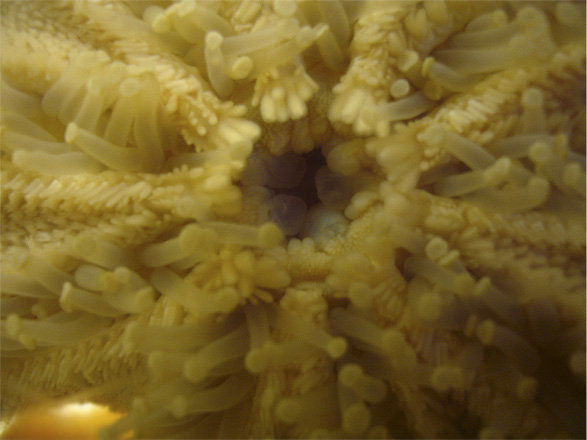
Solaster endeca. This sea star is close related to the previous species. The both species feed mostly on other echinoderms.
You can see the oral side on the second photo.
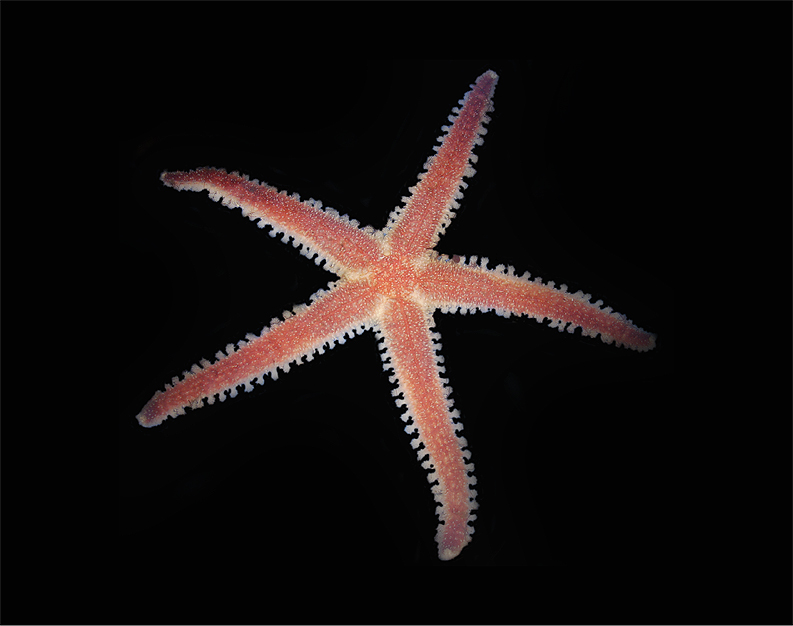
Urasterias lincki. The last sea star species in the White sea. Urasterias is close related to Asterias rubens, they are similar in many things. Urasterias is the biggest White sea star (over 45 cm in diameter). Like the poraniomorpha, nobody knows anything about it (even what does it feed on!)
go to the main page.